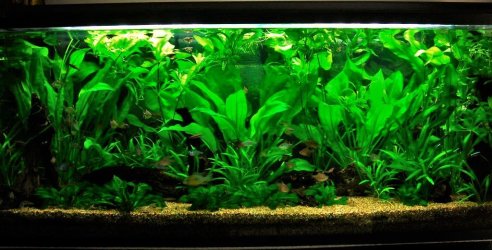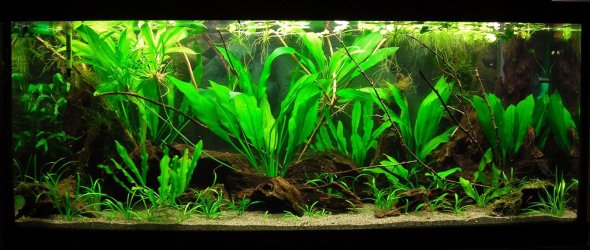Summary (TLDR):
- CRI - How natural the light looks (For you)
- Color Temperature (K) - Frequency distribution of the light (For the plants)
- PAR - How much plant usable light is produced (For the plants)
To clarify these two values are not measuring the same thing and have no equivalencies. With LEDs you kind of need both and then some. The CRI effectively states how well the light matches the light temperature curve (K), over the whole spectrum, but does not imply what the color temperature is.
- CRI measures how well the light replicates all the colors you would have for natural light but at different color temperatures
- Color temperature (K) is a measure of the light spectrum distribution with low temperatures generating more red light and higher temperatures generating more blue light.
You could have a light with a High CRI and but a Low color temperature (K), which would not be good for an aquarium (warm light LEDs). And you could have a light with low CRI and high color temperature (Burple LED lights red and blue only).
For any light, what we are looking for is a light that has frequencies that are useful to the plants, history suggests that for aquariums that is light around 6000k, using the color temperature. If we wanted a near exact match to a 6000k light source with an LED light we need also need one with a high CRI index, otherwise the light might be missing some frequencies necessary for proper photosynthesis. Note that the main chlorophylls mostly use light in the red and blue sides of the spectrum, but accessory pigments use a full selection of light frequencies, and these pigments are necessary to help support photosynthesis.
With the advent of LEDs, and the increase in useful phosphors and florescent materials used in the LEDs the proper frequency distribution of the light being produced is a bit more difficult. Now an LED light could be tuned to a specific plant's requirements. These requirements do not necessary fit the color temperature-based frequency distributions. Additionally, the color temperature and CRI do nothing to determine how much light to use. To address the issue of quality and quantity of light, the PAR rating is starting to be used for some aquarium lights. PAR is a measure of the Photosynthetic Active Radiation. The par rating for a light describes, coarsely, how much radiation that the plant can use that is emitted from the light.
Overall, none of these measurements work well as an individual way of determining the quality and quantity of the light you need for your plants, primarily because many manufacturers of lights can throw up a bunch of numbers that makes their product look good but don't really convey any true meaningful information, they will skip the values that they don't want you to see. Your best bet is to use a higher quality light with high CRI and appropriate color temperature rating, but also has an appropriate PAR rating for your aquarium setup. Most of the good lights now provide the possible CRI, the Color Temperature, and the PAR rating (this does get a bit more complex with adjustable lights). There is still a lot of ambiguity so other people's experience's with their lights is still important.
I personally target CRI of 90 or better, 6000k, with 90 to 140 PAR at 12" from the light. CRI higher means the light looks more natural (important to me), the 6000k means the light is focused on the needs of the plants, and the PAR ensures I have the right amount of light. As far as my plants are concerned my best light is a cheap LED 6500 k, with a low CRI (<70), but higher PAR (120), but I cannot stand the lack of reds and greens with the bluish cast.



